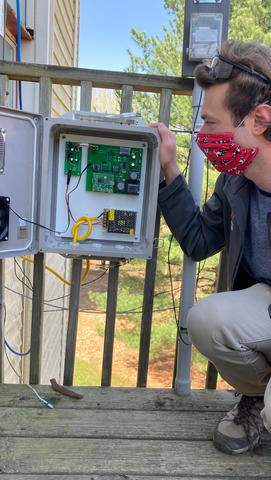Summary
To support urban greenhouse gas (GHG) measurement capability, NIST is developing a low-cost sensor platform that can be deployed within existing measurement networks.
Description

A prototype low-cost GHG sensor station at NIST
This platform uses commercially available sensors and microcontrollers, making them a fraction of the cost of traditional GHG measurement systems. Though these sensors are less accurate than traditional measurement systems, NIST hopes to reduce sensor uncertainty to the 1 ppm level with frequent calibrations and real-time data corrections. Once measurements from the low-cost sensor platform have reached an ideal uncertainty level, NIST will deploy ~50 packages in the Northeast Corridor (NEC).
An Internet of Things (IoT) physical measurements network of this size requires specific considerations to meet NIST’s goals. Given the wide range of sites in the NEC, the sensor platform needs to be easily assembled and suitable for deployment by the end-user in a variety of locations. Platform data must also be securely reported and accessible in real-time, requiring a robust IoT backend infrastructure. As sensors are susceptible to temporal drift and impacts from changing weather conditions, unique correction algorithms and in-field calibrations with reference standards are needed to further reduce measurement uncertainty.
Currently, NIST has several stations deployed in the NEC and will be deploying more in the near future.

